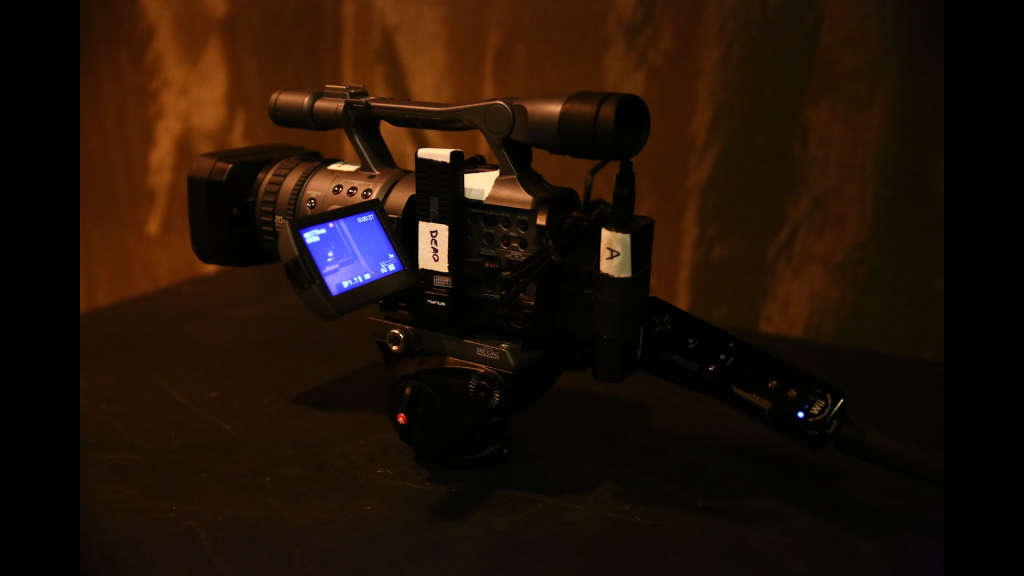Using Wireless Camera Rig Simultaneously for Live Feed and to Capture Production Stills
-
Hello all,
Just a short description of something neat I did for a production in December here in New York City:

- I implemented a wireless live-feed video design via wireless HDMI, with video effects controlled by the live-feed operator in real time by use of a WiiMote that we attached to the wireless camera rig. The rig was operated multimedia designer Hyung Seok Jeon. I stood at audience level in front of a platform operating the projections live as part of the performance and had a handful of lines as part of the play.
- I setup an HDMI splitter so that I could send the incoming live feed video to both the production computer, and a laptop that I setup with a different Isadora Patch.
- I networked the two computers together so that I could send triggers to the Isadora Patch on the laptop from the Isadora Patch on the production computer.
- The Isadora Patch on the laptop displayed the incoming live feed at all times, without the operator-controlled video effects that were present on the production computer Isadora Patch.
- I setup the Isadora Patch on the laptop to capture a 1920x1080 still every time the live feed operator triggered something with the WiiMote that I had attached to the wireless live feed rig or whenever I triggered it manually myself.
- I monitored the feed from the laptop during the show and manually triggered the Isadora Patch on the laptop from the Isadora Patch on the production computer whenever I saw an shot that would make a nice production photo.
- In this way, I was able to capture high quality stills at will, as well as still being able to use the wireless live feed rig for its intended purpose as part of the projection design.
I was just using this $14, one-to-two passive HDMI splitter from B&H. Here's the link for interested parties. Worked great, am probably going to pick up at least three more.
Best wishes,
Woland
-
-
I used a (now discontinued) Nyrius Wireless HDMI live feed transmitter and receiver. The key for me was that the transmitter was small. In this photo, you can see the transmitter sticking straight up to the side of the camera (with the tape that says "DEMO" on it). We used a 90-degree HDMI connector to allow us to have it pointing up, rather than out to the side, so we could secure it to the camera. At the back of the camera, (with the tape that says "A" on it), is a portable battery bank, as one would use for mobile devices. This acted as the wireless power-supply for the wireless HDMI transmitter.
Note: Sometimes cell phones can interfere with the signal, so we had to make sure that the audience turned all of theirs to airplane mode or, preferably, completely off.
Optimizing for Coverage: I was at the edge of the rectangular performance space and the live feed operator sometimes moved all the way to the far end. We were having some signal issues, so I moved the wireless HDMI receiver to the middle of the room, in the grid, and used an HDMI-over-Cat6 extender in order to put it that far away from myself without needing a 60' HDMI cable. No more issues after that, as the camera was on average always closer to the receiver then it had been.
Best wishes,
Woland